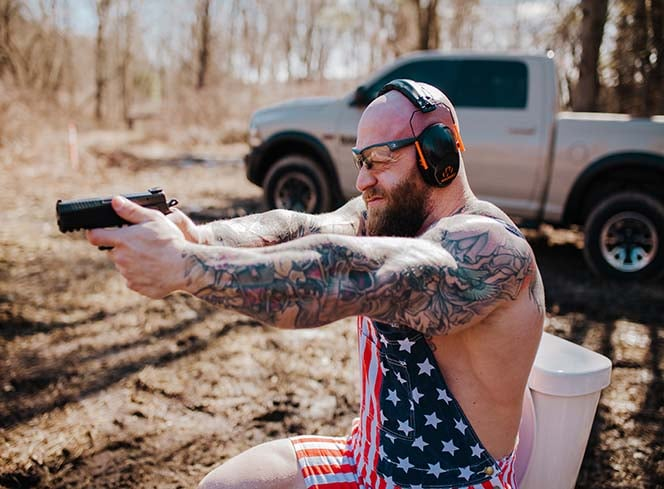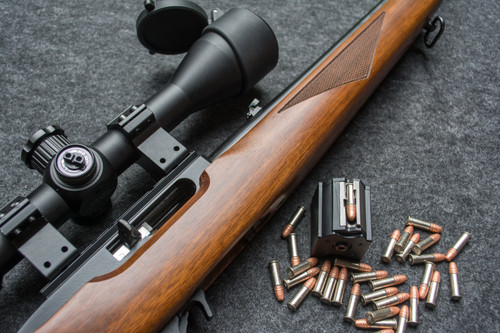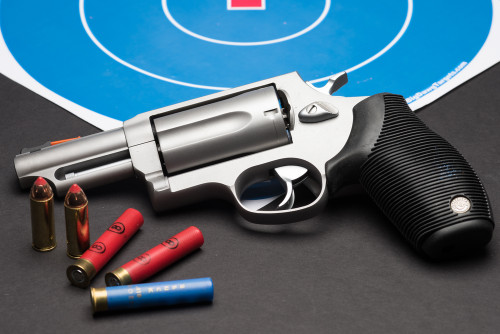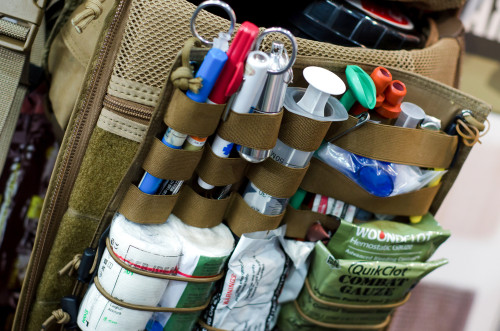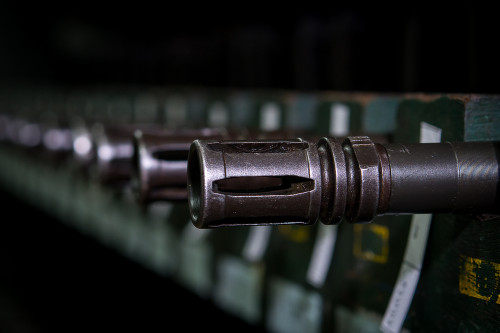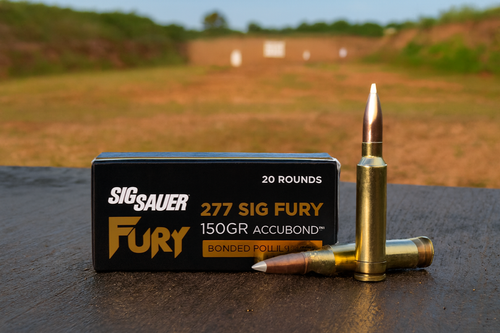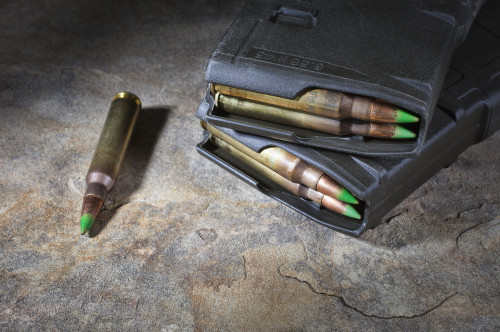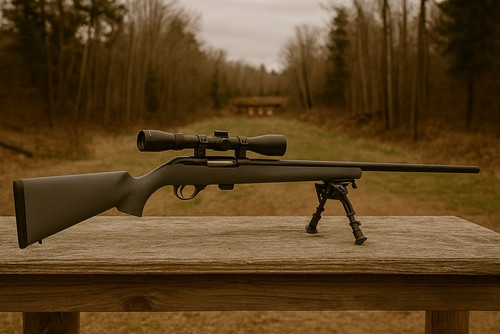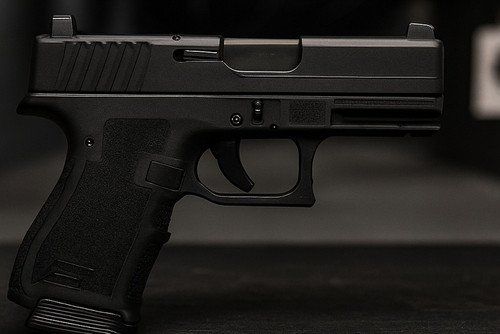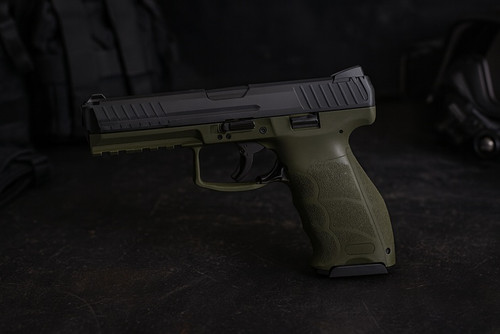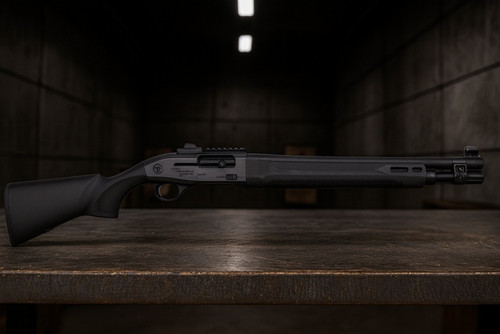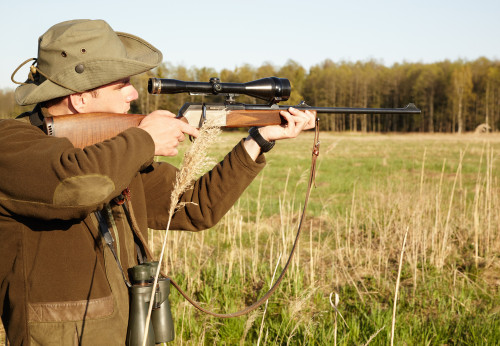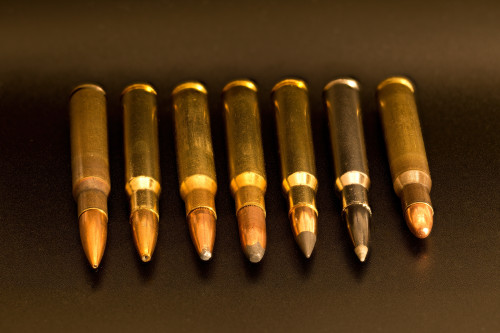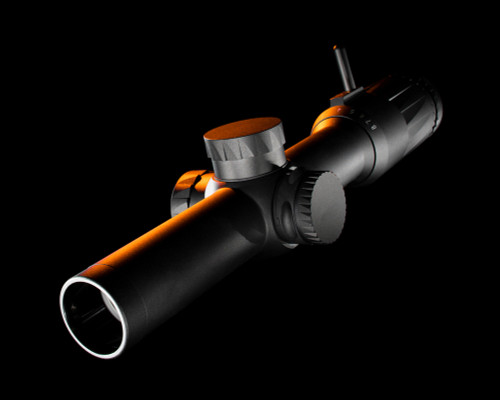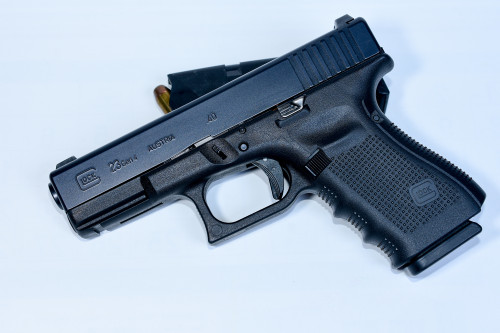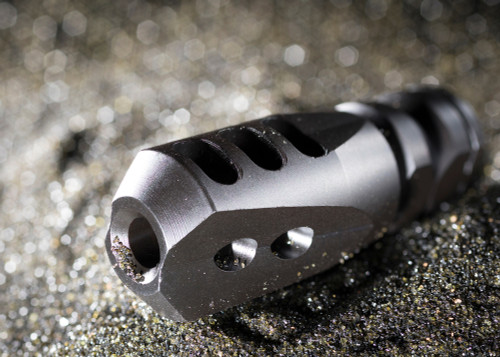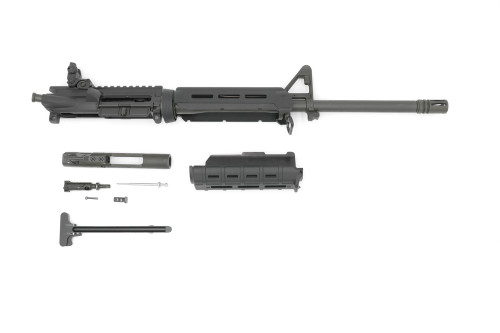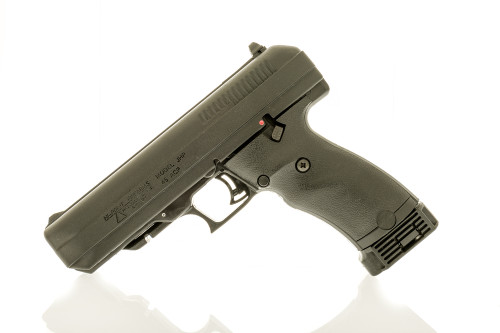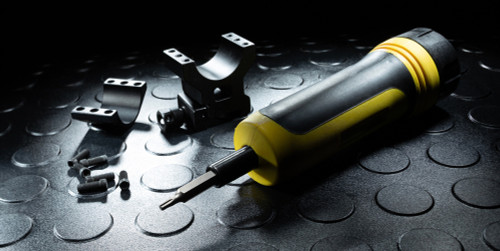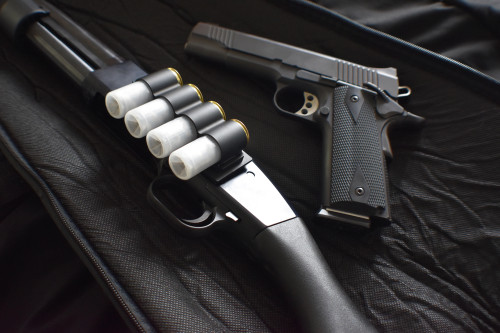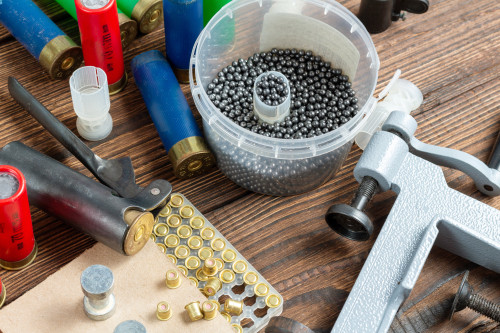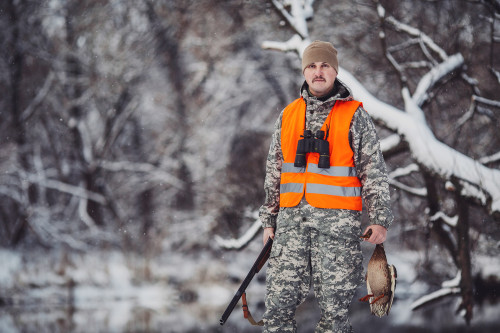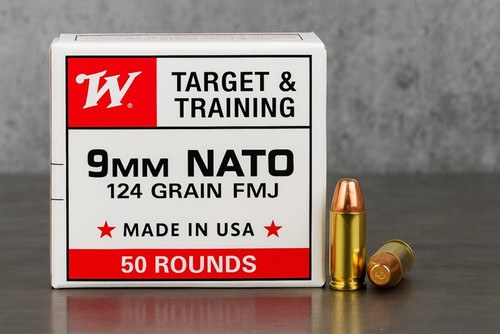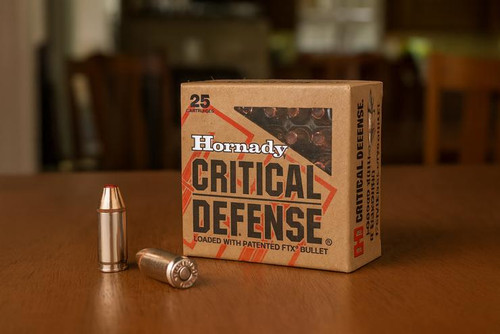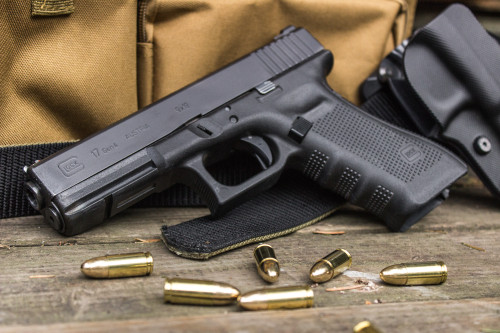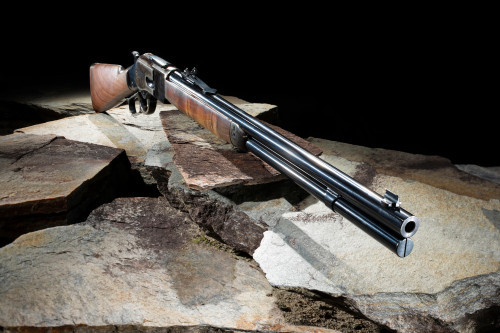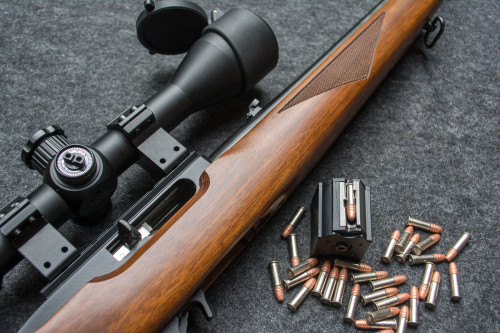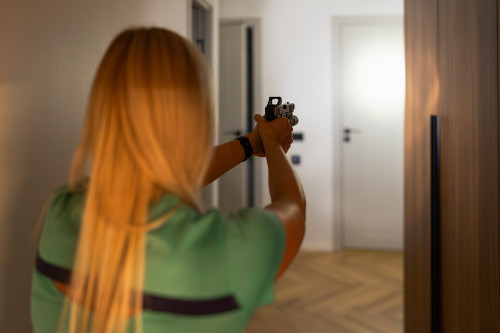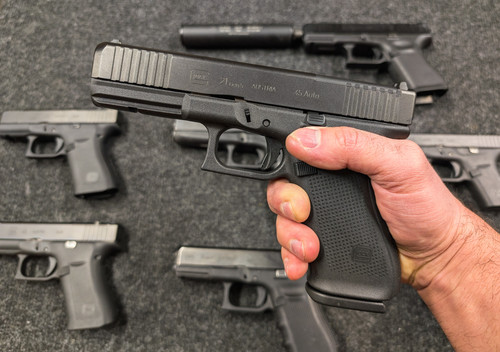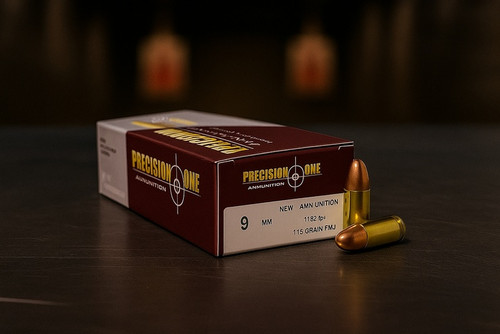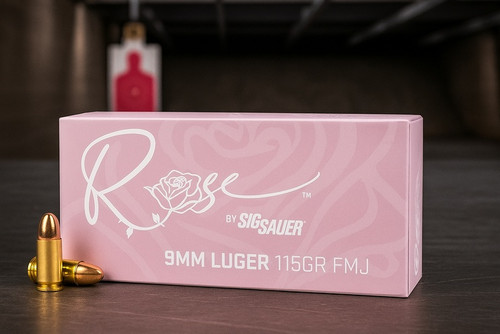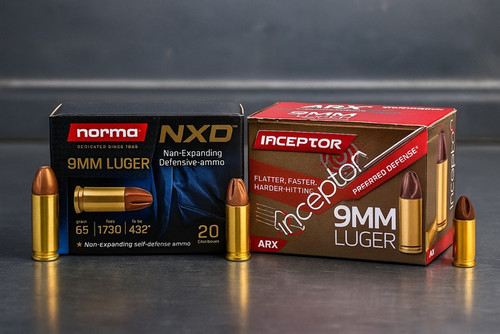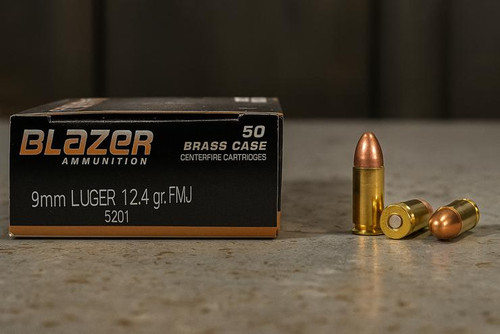Some call it “Hollywood quiet.” Some call it “knock-down deadly.“ Others call it “pointless.” No matter what you think about it, the .300 AAC Blackout (also known as the 7.62x35mm, .300 Blackout, or .300 BLK) is a well-known round for several reasons.
Its performance, versatility, and wide-ranging capability has grabbed the attention of many shooters. The .300 blackout competently takes down deer-sized game and quietly delivers 200-plus grains of lead even in close quarters. It’s perfect for hunting, home defense, and clandestine military operations alike.
Sparing you a wordy history, here’s what you need to know: The .300 Blackout is based off the .223 Remington case and was developed for military units wanting more “oomph” than the 5.56 NATO delivered, hence the .30-caliber slug. The genius of the blackout is that it can operate reliably with minimal parts changes on many small arms currently in armories — 5.56 bolts, bolt carrier groups, fire control groups, and magazines (more or less) all work with the Blackout. To make a 5.56 rifle fire .300 Blackout, all you need to do is swap the barrel and re-zero the optic.
Let’s dive into the specs of the .300 Blackout and see what it's all about.
.300 Blackout Ballistics
As the name implies, the .300 Blackout carries a bullet with a diameter of .30-inches and weights ranging from 90 to 220-plus grains. Americans have a long and storied history with the .30 caliber. It’s arguably the most American rifle bullet diameter — the U.S. has used all manner of .30-caliber cartridges in countless military operations, and we civilians still use it to pile up heaps of deer and big game every year. It’s an extremely capable bullet diameter, and its versatility really shines in the .300 Blackout.
The Blackout has a 34.7mm case length, hence the “x35” in 7.62x35. This is shorter than the 5.56 NATO’s 45mm. Ten millimeters were lopped off the top of the 5.56 case to make room for the oversized .30-caliber slugs. This reduced the case capacity for gunpowder. Because of this, the Blackout is no speed demon — but it’s an extremely versatile cartridge that excels in both long and short barrels.
Firearm barrel length is the most critical determining factor for velocity and kinetic energy with any cartridge, and perhaps more so for the .300 Blackout. Unlike the velocity-dependent 55-grain M193 5.56, which yields the best terminal performance when fired from a 20-inch barrel, the .300 Blackout is less affected by velocity. In fact, it can be argued that it even excels in shorter barrels. This is good news to urban commandos who fight and train inside buildings and out of vehicles. A 20-inch barreled rifle is unwieldy in tight confines.
Popular barrel lengths for .300 Blackout range from 16 inches to 5.5 inches. The use cases of these two barrel lengths are very different. But they’re both fairly common among shooters, which speaks to the versatility of the Blackout.
When you start looking at different .300 Blackout ammo products, there’s an important distinction to be made concerning supersonic and subsonic ammunition. Anything that travels at a supersonic rate travels faster (super) than the speed of sound (sonic). Subsonic is slower than the speed of sound. When a bullet breaks the sound barrier (about 1,150 fps or 767 MPH, give or take based on altitude and atmospheric conditions), it makes a loud CRACK in addition to any BOOM or BANG from the cartridge’s ignition. The crack is just like the sonic boom heard from jets breaking the sound barrier, albeit on a much smaller scale. With .300 Blackout, both supersonic and subsonic rounds are available for different purposes.
Supersonic .300 Blackout Ballistics
Sending .30-caliber projectiles to supersonic velocities in a 35mm case requires small, lightweight bullets. Less mass gets them up to speed more rapidly and leaves more room inside the case for gunpowder. Most supersonic Blackout bullets are in the 90- to 150-grain range. Some in the 168- to 175-grain range are on the ragged edge of supersonic velocity, so we’ll focus on 150 and lighter. In this range are your run-of-the-mill plinking rounds, as well as some specialty hunting and defensive rounds. 110 grains is a very popular weight in this category.
For comparison’s sake, we’ll examine ballistics using two common barrel lengths, 9-inch and 16-inch. The shorter length is ideal for home defense in an AR-15 platform while the 16-inch helps you get the most out of each cartridge in terms of velocity and kinetic energy. Here’s a closer look:
- 16-inch Barrel: A 110-grain .300 Blackout bullet leaving a 16-inch barrel averages 2,350 fps and delivers roughly 1,350 ft.-lbs. of energy. That’s plenty of juice to ethically and effectively take down deer-sized critters. The distance to which it’s an ethical killer depends on your ability. With a 200-yard zero, you’re a little over 3 inches high at 100 yards then about 14 inches low at 300. That means you’ll be able to make easy hits on targets over 200 yards while aiming dead-on, not needing to hold your crosshairs high.
- 9-inch Barrel: In the 9-inch barrel, you’ll see about 2,100 fps and get 1,100 ft.-lbs. of energy at the muzzle with quality 110-grain loads. This load drops 29 inches at 300 yards with a 100-yard zero. You’re giving up distance, but long-range shooting is not the intent of a 9-inch-barrel carbine. Stick to 16 inches or more for that.
Subsonic .300 Blackout Ballistics
Shooting subsonic is both where Blackout shines and where it falls flat. Loading 190-grain (or more) projectiles in a gun with a short barrel creates a very niche but also very effective package. With subsonics, you give up hydrostatic shock, the mechanism that wrecks tissue surrounding a bullet as it passes through a target. However, you’re gaining unmatched stealth and minimal blast. The implication when shooting subsonics is that you’re using a suppressor. This makes this combo as quiet as a centerfire gun can be, and sometimes even quieter than an air rifle. In other words, you’ll hear the gun operating and the impact of the huge bullet on the target but not much else. Suppressed subsonic .300 Blackout is definitely one of the cooler combos to shoot.
The ballistics and bullet drop are laughable outside of living room distances. A 220-grain bullet leaving a 9-inch barrel at 1,000 fps through a suppressor creates almost zero noise, but with a 100-yard zero drops 29 inches across the ensuing 100 yards, it runs out of gas in a hurry.
However, don’t be deterred by the lack of velocity on these bad boys. Despite the lack of hydrostatic shock, there are some excellent bullets that are made to expand at super low velocities.
.300 Blackout Ballistics Chart
To give you a better idea of how these figures look across the wide range of available .300 Blackout rounds, here’s a chart of some of the most common rounds with a 100-yard zero:
| Product | Barrel Length | Muzzle Velocity | Velocity at 100 yds | Velocity at 200 yds | Velocity at 300 yds | Velocity at 400 yds | Velocity at 500 yds |
|---|---|---|---|---|---|---|---|
| 110 gr. V-Max | 9” | 2116 | 1985 | 1858 | 1624 | 1242 | 1111 |
| 190 gr. Sub-X | 9” | 1050 | 998 | 955 | 918 | 885 | 856 |
| 110 gr. CX | 16” | 2285 | 2029 | 1791 | 1575 | 1383 | 1224 |
| 190 gr. Sub-X | 16” | 1050 | 998 | 956 | 919 | 886 | 856 |
L to R: .300 Blackout, 6.5 Grenel, .223 Remington, .308 Winchester
.300 Blackout vs. Everybody
Given the platform from which the Blackout is most commonly fired (the AR-15), comparisons between this round and other popular calibers are the norm. Let’s take a look at how the Blackout fares when pitted against other common AR calibers.
We can go ahead and give the Blackout the edge in stealth with suppressed subsonic rounds and focus on supersonic loads because that’s where the competitors are. We’ll judge the winners of each match based on the following criteria:
- Energy - This is kinetic energy, or how much tactile “oomph” a bullet has. It’s the result of the math involving the velocity and weight of the projectile.
- Velocity - The need for speed! This tells us which is faster.
- Bullet Drop - Bullet drop is what happens as gravity works to “push” a bullet downward as it travels. Drop is largely velocity dependent, as a faster-moving bullet will travel farther than a slower one before they both hit the ground. The winner in this category will be flatter shooting, meaning it doesn’t drop as fast.
- Hunting - For our uses, this is a measure of kinetic energy, as well as availability of bullets suitable for hunting.
- Self/Home Defense - In this case, we’re considering the kinetic energy, reliability, and the portability of popular guns chambered for the rounds.
- Ammo Selection/Availability - Which has the wider selection available?
- Ammo Price - This is a no-brainer. Although you shouldn't skimp out on hunting and defensive ammo, you’re not gonna shoot the gun if it’s all made of unobtanium. Price matters, especially during ammo shortages where prices tend to go up.
With these in mind, you’ll be able to quickly see where the Blackout shines and where it loses out to other common calibers.
.300 Blackout vs. 7.62x39
This isn’t the most frequent matchup with the Blackout, but it’s certainly the closest ballistic match. Everybody’s favorite Soviet pew pill stacks up pretty well against the Blackout in terms of energy, velocity, and bullet drop. With a 100-yard zero, a 110-grain Blackout and 123-grain x39 both leave a 16-inch barrel at roughly 2,350 fps and drop a mere 6.5 inches at 200 yards and about 13.5 inches at 250.
The x39, however, has more kinetic energy due to the bullet’s heavier mass. It has 1,500 ft.-lbs. at the muzzle compared to the 110-grain Blackout’s 1,150. That said, the heavier 125-grain bullet closes the gap with 1,350 ft.-lbs. at the muzzle. A wide variety of bullet weights is a great example of the Blackout’s versatility, while 123-grain FMJ is about the only weight you can get in the x39. Plus, most x39 is cheap Russian ammo that’s shot from AK variants, and trying to hit a target at 200 yards is a lot harder than with an AR-type rifle.
Here are the winners:
Energy: 7.62x39
Velocity: 7.62x39
Drop: Tie
Hunting: Blackout (due to a wealth of hunting-specific bullets)
Self/Home Defense: Blackout
Ammo Selection/Availability: Blackout
Ammo Price: 7.62x39
.300 Blackout vs. .223/5.56 NATO
Comparing .300 blackout to .223 Remington/5.56 NATO is quite common, and for good reason. Both cartridges are ideally suited for the AR platform and use a lot of the same parts. FMJ 5.56 is velocity-dependent and excels out of longer barrels. A 55-grain 5.56 round leaves a 16-inch barrel at a blistering 3,000+ fps and carries 1,160 ft.-lbs. of energy. On the other hand, a 110-grain Blackout clocks in at just shy of 2,400 fps, but it's more than double the weight of the 5.56 and boasts 1,400 ft-lbs. That’s like adding the energy of a 9mm Luger on top of the 5.56.
The velocity of the 5.56 keeps it flatter at distance, but again the 55-grain bullet doesn’t carry the same energy as the Blackout does. Both are great and largely interchangeable unless you plan on hunting, in which case the Blackout is the clear favorite.
Energy: Blackout
Velocity: .223
Drop: .223
Hunting: Blackout
Self/Home Defense: Blackout
Ammo Selection/Availability: .223
Ammo Price: .223
.300 Blackout vs. .308/7.62x51 NATO
This really isn’t a fair fight, but it’s a comparison that comes up nonetheless and one in which the Blackout has an advantage in one area. Being almost identical, the .308 and the 7.62x51 NATO are both full-sized battle cartridges that have served militaries around the world for decades and are now some of the most popular hunting and sporting cartridges on the market. With the longer and wider case length, the .308 / 7.62x51 is bigger, faster, and stronger but has considerably more blast and concussion.
The only area where the Blackout has a leg up is in self/home defense. Firing any gun indoors leaves you with ringing ears, but a .308 blast in a hallway might be the last thing you ever hear.
Energy: .308 / 7.62x51
Velocity: .308 / 7.62x51
Drop: .308 / 7.62x51
Hunting: .308 / 7.62x51
Self/Home Defense: Blackout
Ammo Selection/Availability: .308 / 7.62x51
Ammo Price: Tie
.300 Blackout vs. 6.5 Grendel
This is an interesting matchup, and it’s a case study in niche calibers. Both the Blackout and 6.5 Grendel bring huge advantages to the AR platform, but they’re quite different in their ideal uses. The Grendel was designed to give the AR more legs over long distances, with ballistics approaching the .308 (not in terms of energy). The Blackout, as we know by now, is designed to excel at much shorter ranges.
That said, there is some overlap in the hunting world. Lots of folks like to talk about bullet drop at 400 and 500 yards or more. But how often does the average Joe Six-Pack Hunter shoot a deer that far away? Seldom, if ever. The vast majority of shots in the Eastern United States are at 200 yards or less, making the Grendel and Blackout peers in terms of performance (with an edge to the Grendel in terms of energy). The adage “speed kills” is where the Grendel earns its lethality while the Blackout relies on a good old .30-caliber slug.
Energy: Grendel
Velocity: Grendel
Drop: Grendel
Hunting: Grendel
Self/Home Defense: Blackout
Ammo Selection/Availability: Blackout (used to be Grendel until the 2020 Russian ammo ban killed off cheap steel-cased Grendel ammo)
Ammo Price: Blackout
.300 Blackout vs. 6.8 SPC
The 6.8 SPC is usually put up against the 6.5 Grendel because the two are nearly identical in so many ways. The deciding factor in choosing one over the other is often ammo cost and availability.
The Blackout stacks up the same against the 6.8 SPC as it does the Grendel. It loses as a purely hunting round due to less energy and velocity, but excels at shorter ranges (especially with a suppressor). The case volume of the .300 Blackout is small enough that even supersonic loads suppress very well while the 6.8 SPC is going to be “blastier” in almost all situations. The Blackout is also the clear winner where it really counts: ammo price and availability.
Energy: 6.8 SPC
Velocity: 6.8 SPC
Drop: 6.8 SPC
Hunting: 6.8 SPC
Self/Home Defense: Blackout
Ammo Selection/Availability: Blackout
Ammo Price: Blackout
A .300 Blackout in a defensive configuration. Note the label above the ejection port.
Best Guns for .300 Blackout
We’ve seen that the .300 Blackout excels at short range, with its wide variety of bullet weights and status as a reliable deer slayer. So what kind of gun should you get?
The answer is, it depends. Most folks take advantage of the Blackout’s upgraded energy for home defense in an AR platform. To do so, you don’t even need to buy a whole gun; all you need is a barrel to swap onto an existing AR, and you’re ready to roll. However, to ensure the best performance, it’s a good idea to at least get a complete upper with barrel, upper receiver, bolt carrier group, and a few .300 Blackout-specific mags to use.
If you’re going to use the .300 Blackout for hunting, you can certainly use a 9-inch AR (depending on what state you’re in). But you’ll see better results and gain more lethality using a 16-inch upper with supersonic ammo. Otherwise, you might consider a bolt-action rifle that feeds from AR mags such as the Ruger Ranch rifle (it’s got a threaded barrel, too!).
What’s the .300 Blackout Good For?
The vast majority of folks who buy a rifle chambered for .300 Blackout use it as their proverbial “nightstand gun.” A .300 Blackout AR is short, lightweight, handy, and can readily accept both a weapon light and red dot. It’s a better option than a handgun for those living in a home due to its increased lethality and accuracy.
The other main Blackout users are hunters. The Blackout has very minimal recoil, which makes it a fantastic option for young hunters or those shy about recoil.
A Word of Caution!
Because the .300 Blackout was designed for use in AR-type rifles, there’s a lot of compatibility between rifles chambered in 5.56/.223 rifles and the .300 Blackout. This presents a potentially hazardous situation for those who own guns in both calibers. A .223 round that is accidentally loaded into a .300 Blackout gun won’t load. It’ll just stick halfway in the chamber and stop the bolt carrier group from advancing. This is because the shoulder of the .223 cartridge is bigger than the diameter of the chamber.
Please be aware: If you shoot your .223 rifle and a .300 Blackout bullet makes it into the magazine, bad things will happen. The very similar overall length permits the bolt to close on the round, and you’ve got an artificial headspace created by the fat bullet where the shoulder of the .223 should be. When ignited, the gun goes ka-boom, and you’ll be lucky if you have your hearing and vision intact after the incident.
This is why it’s a good idea to dedicate a whole rifle to Blackout, complete with clearly marked magazines and one of those dust covers that reads “.300 BLK.”
Final Thoughts
There are a wealth of calibers created to make the AR platform a formidable hunting arm and defensive weapon. The .300 Blackout excels at both due to its great versatility. It’s a low-recoiling, highly effective cartridge that deserves a home under your bed, in the deer woods, or on the battlefield.
Pro Armory is your one-stop shop for all things .300 BLK, both in small boxes and bulk cases. We’ve got a great selection of ammo and gear to help you find the perfect round for your needs.
If you're looking to add some versatility to your shooting experience or want to try something new, check out our selection of .300 Blackout ammo. It’s cheap, it’s in stock, and ready to ship to you for the lowest price possible — what more can you want?



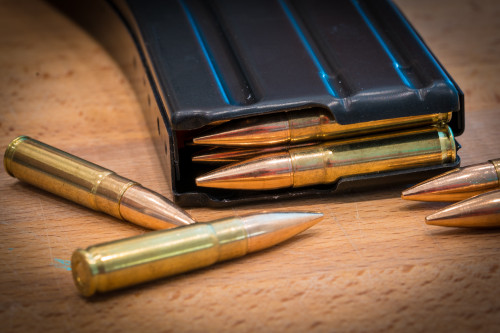
 Pro Armory Editorial Team
Pro Armory Editorial Team